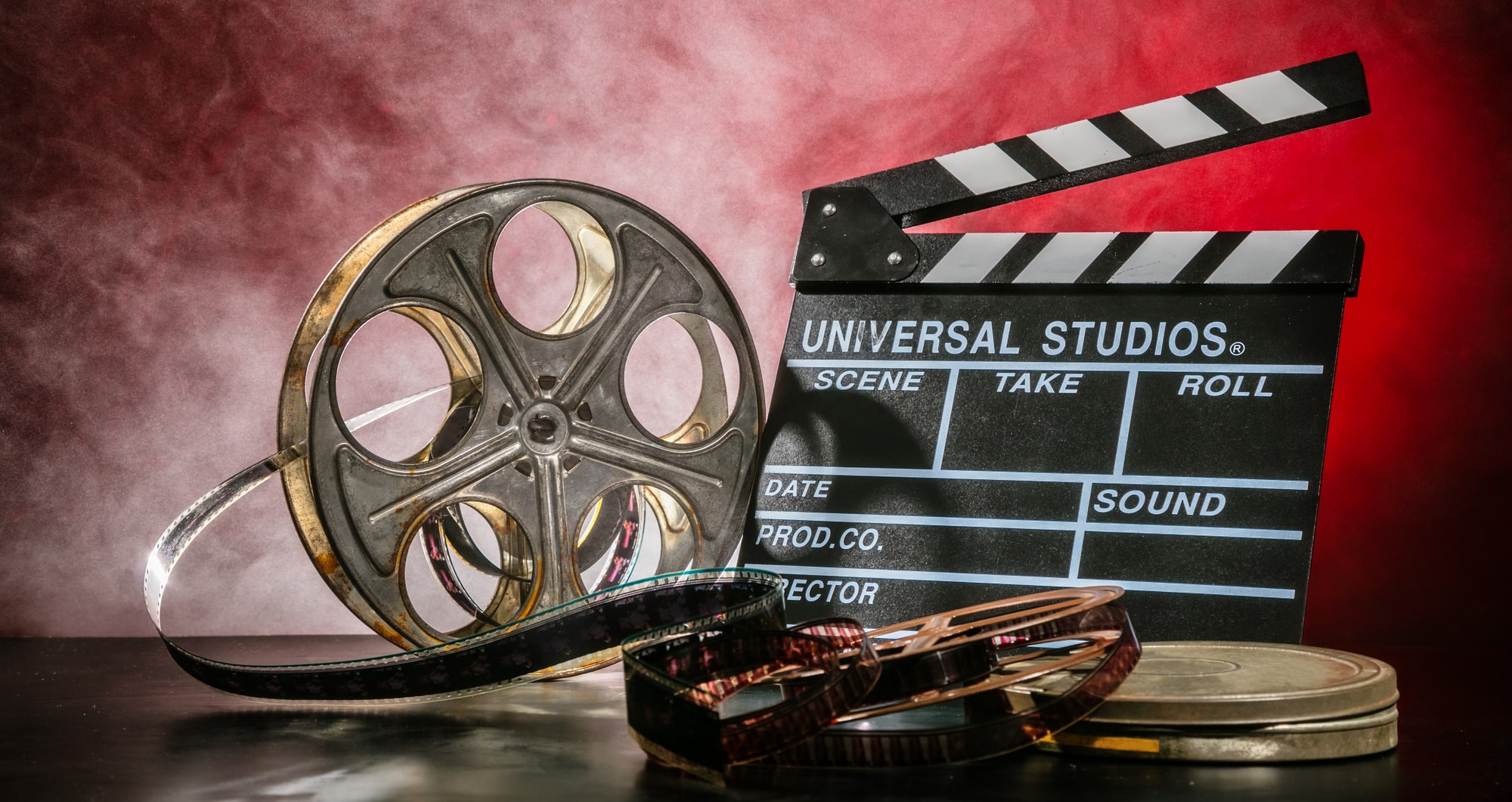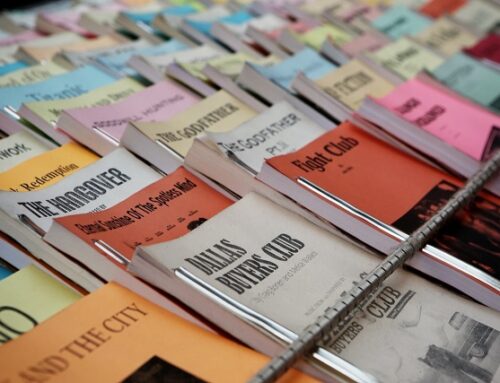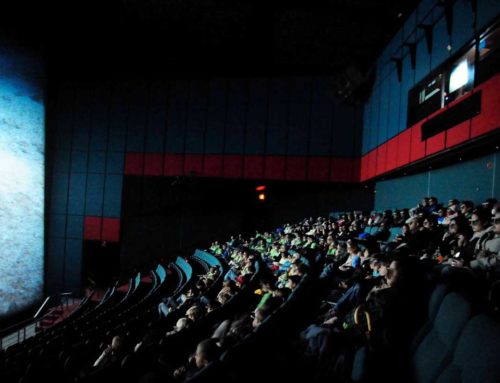[by John Robert Marlow]
Humans have always been storytellers. Whether gathered around a campfire, painting on cave walls, or writing words on dead trees or glowing screens—it’s in our blood. Books and other storytelling formats can be noble undertakings, capable of reaching hundreds of thousands and sometimes millions of people. But movies and series are the global campfires of our time.
And those fires have become more numerous—offering adaptable storytellers an unprecedented opportunity to get their stories on the screen. While the number of well-heeled movie buyers has been dropping as major studios merge, the number of buyers for streaming / TV series (and features) has exploded.
Between 2013 and 2021, cable TV subscription numbers dropped by nearly 30%. Thirty-three million Americans cut the cord on cable services in 2018 alone. The reason is simple: viewers no longer need to pay inflated cable prices for content they can find on more reasonably priced streaming services like Netflix and Amazon. Industry leader Netflix now has more than 200 million subscribers in 192 countries.
Not coincidentally, this success sparked what are now called the “content wars” or “streaming wars.” Corporate goliaths like Apple, Disney, NBC/Universal (Peacock), Paramount, WarnerMedia (HBO Max / DC Universe), and Google (YouTube Premium) decided to start their own streaming services to compete. The price of entry is not cheap. In 2017, streaming leader Netflix spent $6 billion on content. For 2021, the figure is $17 billion. Amazon spent close to $8 billion in 2019 and $11 billion in 2021—and has announced plans to spend a billion dollars on a single series.
Old content alone is not enough to compete, which means that every one of these new streaming entrants will be shopping for an ocean of new content and spending billions of dollars to buy it. Existing players will have to up their games as well; HBO, for example, bumped up its original content by 50% in 2019. Facebook has dipped its toe in the water with Facebook Watch, and at one point even Walmart was looking to get in on the action with Vudu (later sold to Fandango, which is owned by NBC/Universal and WarnerMedia). The situation marks an unprecedented and seismic shift that will affect the entertainment landscape for decades to come. All of this was well underway before the pandemic, which simply accelerated the trend. And what all that means is this:
There has never been a better time to pitch a feature or series.
A feature screenplay is just what it sounds like: a movie script. But what exactly is a series pitch—and what are buyers looking for when it comes to features and series? We’ll cover that in a moment. But first, the obvious question: why not just sell the screen rights to your book or other story instead of doing a screenplay or series proposal?
Well, two reasons: money and credits (which mean more money). Unless you’ve already hit it big as an author—really, really big—the amount of money (and especially up-front money) you get for rights alone will be small. And if what you’re selling is a series, you’ll likely have little or no ongoing involvement as the series continues (which again means less money).
Series proposals, like feature screenplays, answer questions books don’t: How do we adapt this into a series? What do we keep, what do we drop, and what do we add, change, or move around? Who do we hire to write it, what’s that going to cost us, how long will it take, and—at the end of all that—will we have something worth filming?
When you walk in the door with a finished feature screenplay or series proposal, all of those questions go away. If they like it, they buy it (or option it). And the closer you can get them to the finish line—the easier you make their job—the more they will pay you. You’ll also get (if you demand it) a source credit (“based on the book [Your Title Here] by [You]”) and, likely, payments for sequels, prequels, spinoffs, etc.
If you’re selling a series, there’s an additional payment for each episode, a “created by” credit, and possibly a producer credit as well. Each of these comes with—you guessed it—more money per episode. Because you’ve shown that you can write an engaging pilot and convey a vision for the series, you may also be tapped to write future episodes—collecting a “written by” credit and yet another paycheck. Simply put, the longer the series goes on and the more involved you are, the more you make. It can, in the best cases, be the difference between thousands and hundreds of thousands or (best case) millions.
And about that… No matter how much money Hollywood pays you, there’s more to be made from your book(s). That’s because when that crucial source credit appears on the screen, a hit movie or series sells more books than you can imagine. There’s a limit to what Hollywood will pay you, but there is no limit to how many books you can sell. And every book sold puts more money in your pocket. Forever. It doesn’t matter whether you’re selling two books a year or two million—a hit on the screen will vastly increase your numbers. I’ve heard this from authors whose books were out of print shortly before the movie (Alan Glynn, Limitless), those whose books were already selling well in 36 languages (Vikas Swarup, Slumdog Millionaire), and everyone in between.
How much does Hollywood pay? A typical feature screenplay from a first-timer brings $300–$600k, with occasional forays past the $1M mark. The record is $5.6M. In 2021, Netflix paid writer/director Rian Johnson $450M for the right to do two sequels to his Knives Out screenplay/feature. While technically a rights sale, that deal wouldn’t have happened without the first screenplay.
Will Rian make more money on the books? We’ll never know, because in his case, there are no books. (Imagine if there were.) The point is, one way or another, Hollywood means money—so don’t leave the “screen side” out of your plans.
What Hollywood Wants
Through long and sometimes painful experience, Hollywood buyers have discovered qualities that—while they may not guarantee success—certainly make success more likely. And so, whether your feature script or series proposal is being looked at by an agent, manager, producer, actor, director, or studio executive, you can rest assured that they are ticking through a mental checklist as they go. A checklist that looks rather like this…
Pitchable Concept: Hollywood movers and shakers may have more money than the average writer, but they have considerably less time. They want to know who and what your story is about—in ten seconds or less. If you can’t keep their attention for ten seconds, you can’t do it for thirty minutes or an hour (or ten). This means a killer logline that contains the three essential elements of your story’s core concept: who it’s about, what their goal is, and the obstacle that stands in their way. “A fugitive doctor wrongly convicted of killing his wife struggles to prove his innocence while pursued by a relentless U.S. Marshal.” That’s a logline. At a relaxed pace, it takes seven seconds to say aloud.
Relatable Characters: The biggest, most action-packed story in the world will bore an audience to tears if the characters aren’t there. The smallest, most personal story in the world will rivet an audience if the characters are relatable and/or compelling. Ideally, different audience segments see a bit of themselves, or people they know, in different characters. Viewers keep watching not because they want to know what happens next but because they’re emotionally invested in the characters and they have to know what happens to the characters next. Fortunately, the very nature of series allows us to explore and develop characters in ways that features simply don’t have time for. That’s a huge part of their appeal.
Emotionally Compelling Story: The main characters’ journeys must trigger the viewer’s emotions. People who sit down to watch a feature or series are seeking an emotional experience—whether that’s laughter, tension, fear, retribution, wonder, or catharsis. Or all of the above. You’re not selling a story or words on paper or screen. You are selling an emotional journey—or you’re not selling anything at all.
Ticking Clock: There’s a difference between a main character who sets out to find a bomb that may go off and destroy the city at some unspecified time in the future and one who must find and disarm that same bomb before it goes off an hour from now. A ticking clock may be time-based (as in the bomb example), event-based (the character must, say, win the lady’s heart before she falls for Mr. Wrong), or both (drive a time-traveling DeLorean past a lightning strike at precisely 10:04 p.m. next Saturday night). In all cases, a ticking clock adds tension, urgency, and conflict—creating a situation where there is literally no time to waste. A pilot or other episode may have one or even several ticking clocks; an entire season may have another. Occasionally, a whole series will have a ticking clock. “Winter is coming.”
Visual Potential: Some books are cinematic by nature: others not so much. Authors can climb inside characters’ heads and stay there for pages on end; screenwriters, for the most part, cannot. Interesting things must pass before the camera, thoughts must be spoken or shown, internal struggles must be externalized or have external equivalents. At the same time, none of this can be obvious. This is why you often see a rookie character paired with a grizzled veteran; in showing the rookie how things work, the vet also shows the viewer. The filmmaker’s art makes use of sight and sound alone. Your book doesn’t have to be visual, but the adaptation does.
Structure: “Classical” story structure consists of seven plot points in a specific order: inciting incident, first act turn, midpoint, low point, second act turn, climax and wrap-up. Probably 95%+ of all commercially successful feature films are classically structured. The same is true of series, except that some of these structures play out over multiple episodes or even seasons, while others may run their course in the space of a single episode. (The latter being far more common in network series.) Buyers are inclined to play the odds, and most series that get bought incorporate classical structure.
Actor-Friendly Roles: Actors want beefy roles in series and features. Actors and others used to look down on series (like movie sequels), but cable and streaming changed the rules—and are now recognized as havens of creative expression. So much so that prominent feature actors often take pay cuts to do series because the format allows them to do things they couldn’t do anywhere else. No one’s going to pay them $20 million for two hours of series screen time—but if the series is successful, the long-term payoff can be enormous; even $1 million per episode adds up quickly. Payment aside, actors want to be challenged. They want to dive deep and stay there, explore different facets of their characters, evolve them over time, surprise and move the audience in ways a two-hour format would never allow. Help them help you, and give them what they want.
Expected Length: Series have established running times. Non-ad-supported outlets have more flexibility than ad-supported time-slot networks, but the norm is still around 30 minutes for comedy and 60 for drama. First-timers do not warrant exceptions; no one wants to hear why your feature or series must break the mold. First, play by the rules; maybe you can bend (or break) them later.
Reasonable Budget: Absent raging bestseller status or a massive Hollywood track record, a newcomer is not likely to warrant the $250 million Amazon recently paid for The Lord of the Rings rights, or that series’ projected billion-dollar budget. Even the most expensive series (LOTR excepted) get a whole season out of $100 million or so—which is about half the budget of a single tentpole action film (or about one-fifth Avatar’s budget). Most series get by on considerably less. Look at what’s hitting in the market you seek to serve—and don’t bust the budget. The more it costs, the smaller the number of people and companies willing and able to make it. You can buy a decent house for what it costs to shoot two characters talking in a coffee shop—and a place in Beverly Hills for the cost of a dragon attack.
Low-Fat Story: Books can be as long as their authors want them to be, provided they keep things interesting; typical features run 90–120 minutes, and series episodes can be a half-hour or an hour, more or less. Because of this, everything nonessential is out the window. Because Scene A, therefore Scene B; because Scene B, therefore Scene C. There is no time for digressions or detours that are not vital parts of the characters’ emotional journeys or relationships or of the plot itself (and preferably both). Does a character visit the same place three times? Can you make that two or one? Does a character piece something together with information gleaned from five different characters? Can you condense those five characters into three or two? Maybe not, but it’s important to ask—and answer—such questions yourself before someone else does and wonders why you didn’t take care of this yourself. If you want to not only sell the feature or series but stay on as a writer, you’re going to have to at least look like you know what you’re doing.
Staying Power: When it comes to series—can yours go the distance? Is there enough raw material to evolve and expand over multiple seasons without hitting the same note over and over or dragging things out just to burn time? This is going to depend on the nature of the characters, situations, relationships, and conflicts established in the first season. Feature films don’t need this. Sure, it’s nice to have franchise potential—but it would take more than a hundred movies, billions of dollars, and well over a century of fast-paced feature film production to match the number of hours in a ten-year network series. The series writer’s task is not the same as the feature writer’s. You must be faster, leaner, and deeper.
All of that said, a feature screenplay is a feature screenplay—but what is…
The Series Proposal
When you’re pitching a feature, you have a logline, a short pitch, a screenplay—and that’s it. If someone likes the logline (a ten-second pitch), they generally ask to see the script. If they want to know more before committing to read, they get the one-minute pitch and sometimes a treatment. Once they’ve read the script, they know everything they need to know to option, buy, or pass. The screenplay sells itself or doesn’t.
Pitching a series isn’t like that because, in this case, you’re trying to sell something that (mostly) doesn’t yet exist. You don’t sell a series you hope will go for ten seasons by writing ten seasons’ worth of episodes and then looking for a buyer. What you do instead is write the first episode—the pilot—and create a series bible to go with it.
Now, writing the first episode is an art in itself, somewhat different from writing a feature screenplay and very different from writing a book—but if you’re not comfortable tackling that yourself, you can always hire someone to help or do it for you. (Just make sure you keep the rights.) And while this isn’t a treatise on how to write a pilot, there are a few things to keep in mind…
The length of the pilot depends on the genre: comedies typically run thirty minutes, while dramas are an hour. Page count varies. Because dialogue burns more pages per minute of screen time than action, talky tales run longer (pagewise) than action-oriented stories.
Scripts intended for networks that show commercials might be shorter than those for streamers that don’t. Generally speaking, comedies run 28–32 pages and dramas 48–70. Some pilots are written like short features, while others include labeled act breaks.
The pilot sets up your characters and the world they inhabit. But whereas a feature need only concern itself with a two-hour story, a series proposal has to set the ball rolling on a tale that might span (depending on frequency) anywhere from 60–220 or more shows over the course of a decade. So your pilot needs help. That’s where the bible comes in.
No one wants a series that peters out after one or two seasons. (The exception being ”limited series”; more on this below.) The purpose of the series bible is to show the prospective buyer that the characters, conflicts, and situations set up in the pilot can go the distance, spinning off new and compelling stories and arcs and subplots that can go on and on—and on.
This is why there are so many cop, medical, and legal dramas; people in these careers are constantly exposed to new people and situations, and the stakes are often life and death. But there are other more unique approaches; witness Breaking Bad, House of Cards, or Game of Thrones.
So, a series bible will include the following things…
A long-ish summary of the pilot episode, perhaps one page of summary for every ten pages of script—and perhaps less.
Brief summaries of all first-season episodes: a good-sized paragraph for each. In the case of a limited series, this could be as few as 4–6 episodes for the whole series. For conventional series, you’re looking at 6–13 episodes for a cable or streaming season, and up to 24 for network.
Keep in mind that there’s a fundamental difference between overall streaming/cable and network series structure. Networks prefer their episodes to be modular; that is, all episodes are self-contained and can be viewed in isolation. If viewers miss one episode (or three), it doesn’t matter all that much.
Streaming/cable series are another story. For most, each season has an overall arc, and each episode occupies a particular (and non-interchangeable) place within it. Episodes, like book chapters, are part of one continuous whole; miss one—or view it out of order—and you could find yourself completely lost.
Write your summaries accordingly—and (unless you’re pitching a limited series) tell the story in a way that makes it screamingly obvious that these characters, conflicts, and situations have the “legs” to carry them through multiple seasons.
Speaking of characters, the bible should also include bios for all main and recurring characters. What are their essential characteristics, driving forces and desires, fears or insecurities, and obstacles? How do they relate to the other characters in the story? You don’t have to go on for pages; a beefy paragraph for each can suffice.
You may also want to indicate the show’s future direction—beyond season one—with overall or season-by-season notes. This information need not be presented with the same level of detail as the first-season info but should nonetheless show the reader that you have a firm grasp on where things are going.
You may or may not wish to include supplementary material, which can be anything that seems appropriate for your particular project. This doesn’t mean throwing in the kitchen sink or “padding” the proposal to make it longer. But if there are documents (real or imagined) that meaningfully enhance the proposal’s impact, put them in there. JFK’s moonshot speech in a series about the U.S. space program, for example; FDR’s day-of-infamy speech in a story about World War Two; the Martian Constitution in a tale set on a colonized Mars—you get the idea. If the originals are too long (or don’t really exist), just excerpt the most relevant portion(s).
Finally, you’ll need a logline and one-page pitch for both the pilot episode and the series as a whole. Because first, you have to get their attention.
Conclusion
Hollywood may be a well-defended castle on a hill, but it cannot survive without a constant influx of new material—stories—to keep audiences engaged. The “streaming wars” have massively increased the amount of material—in the form of series and features—Hollywood needs. The war has just begun, and there is no end in sight.
For those who can tell the kinds of stories Hollywood needs—summer is coming.
Article copyright © by John Robert Marlow – All rights reserved.
Recommended reading: Adapting Your Book for the Screen – A Hollywood Primer






